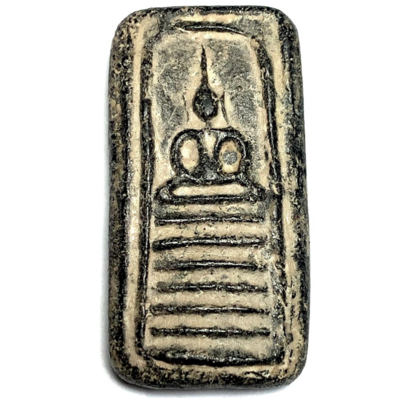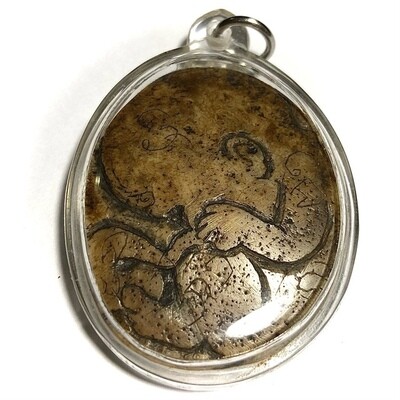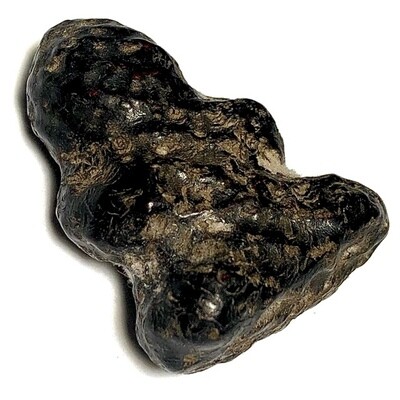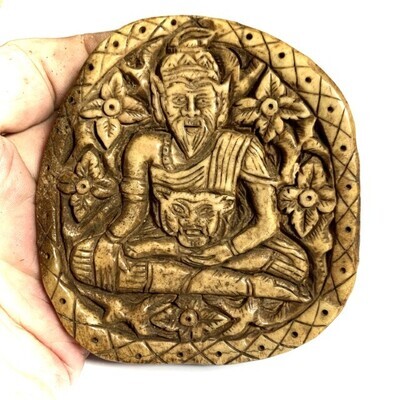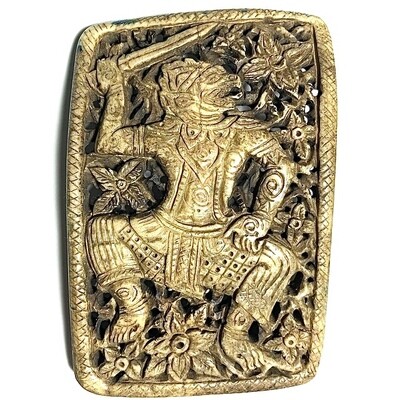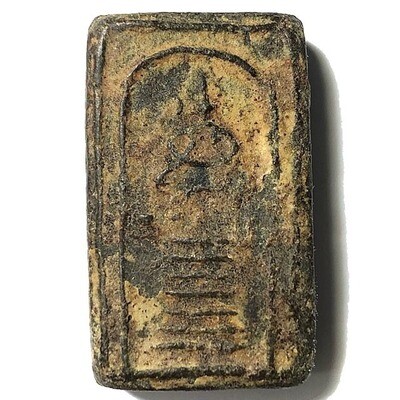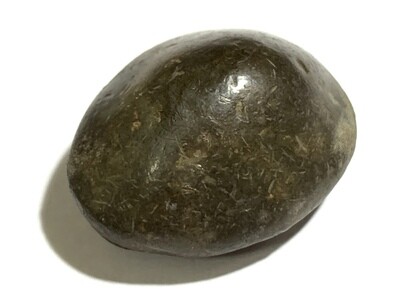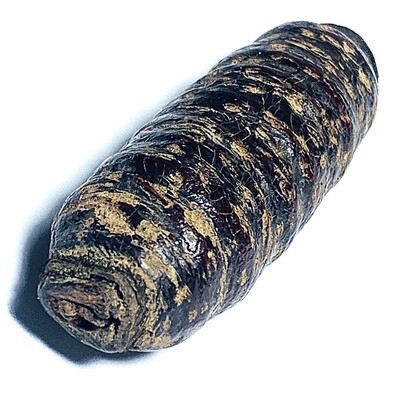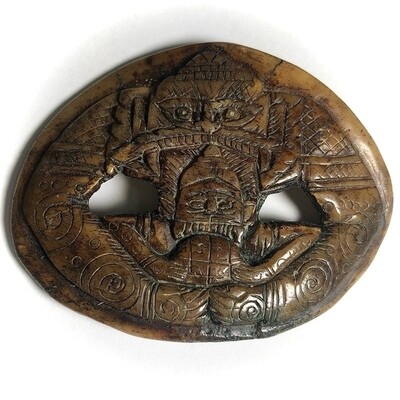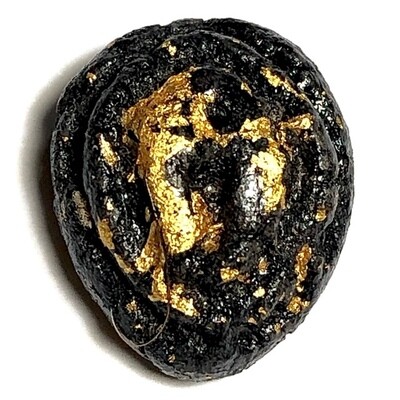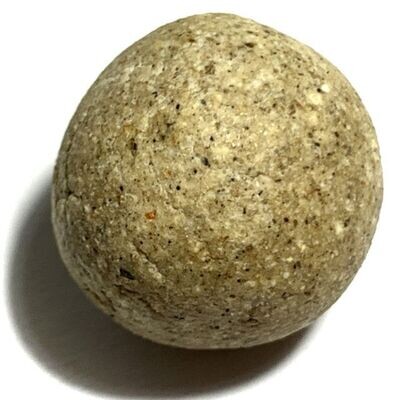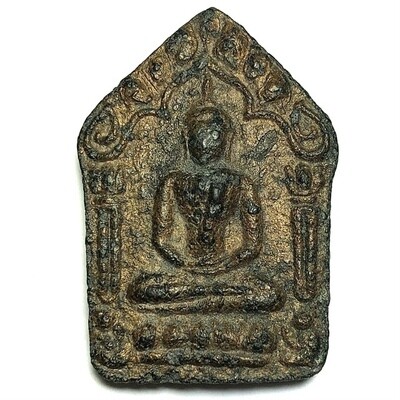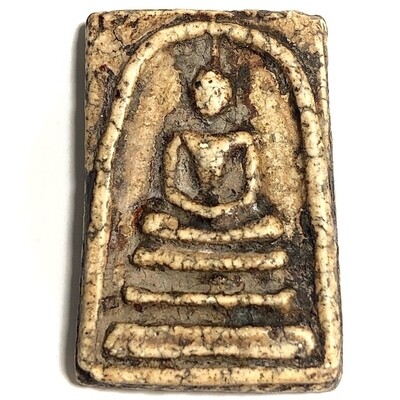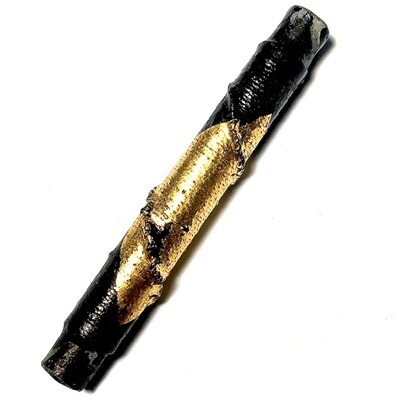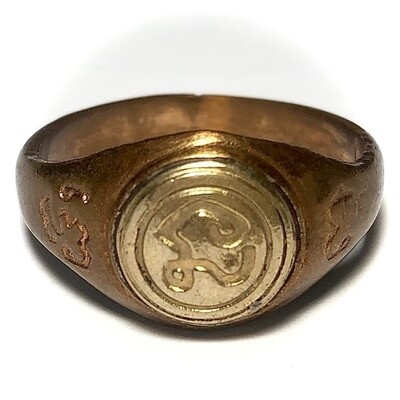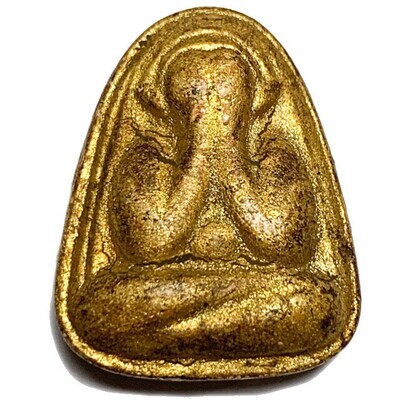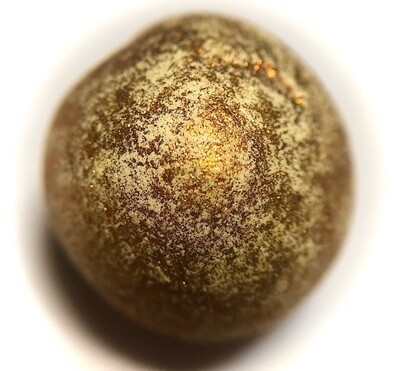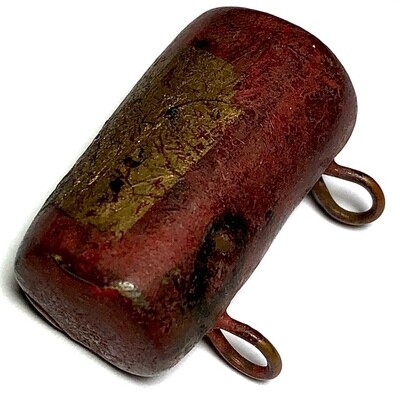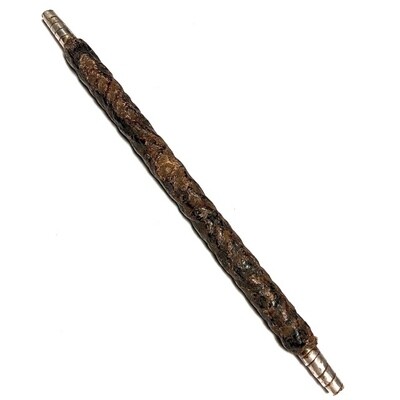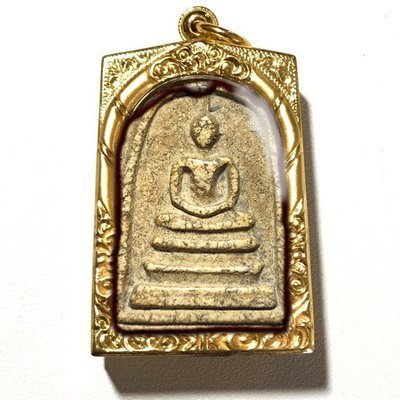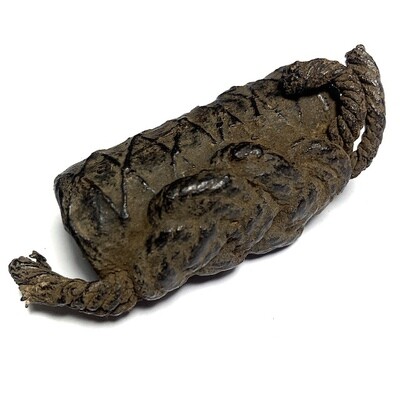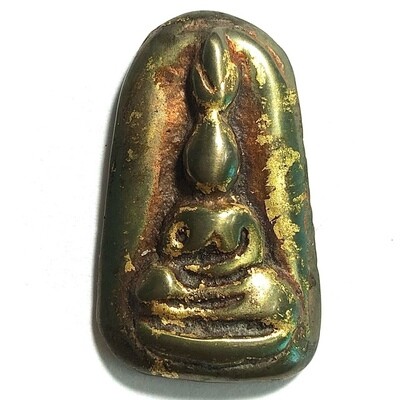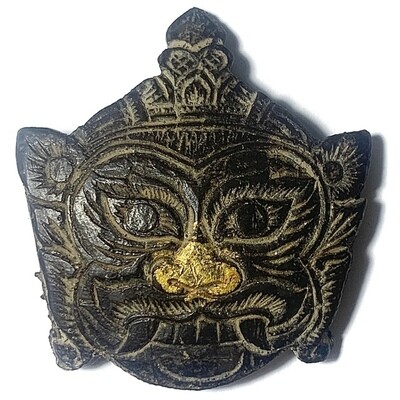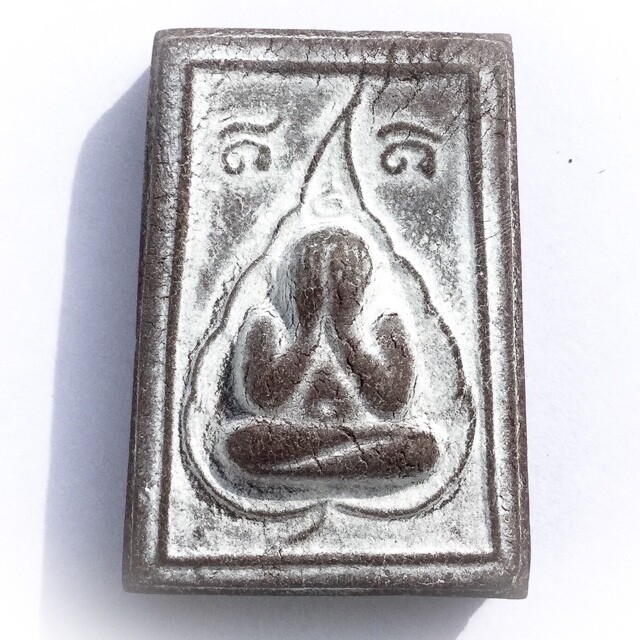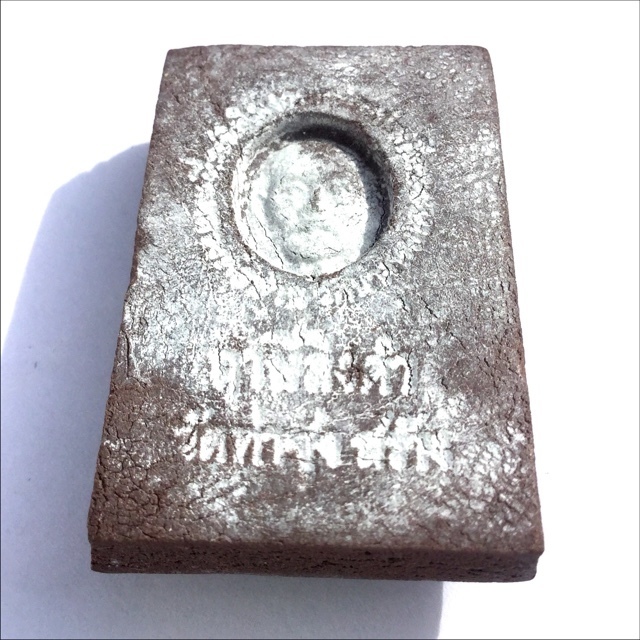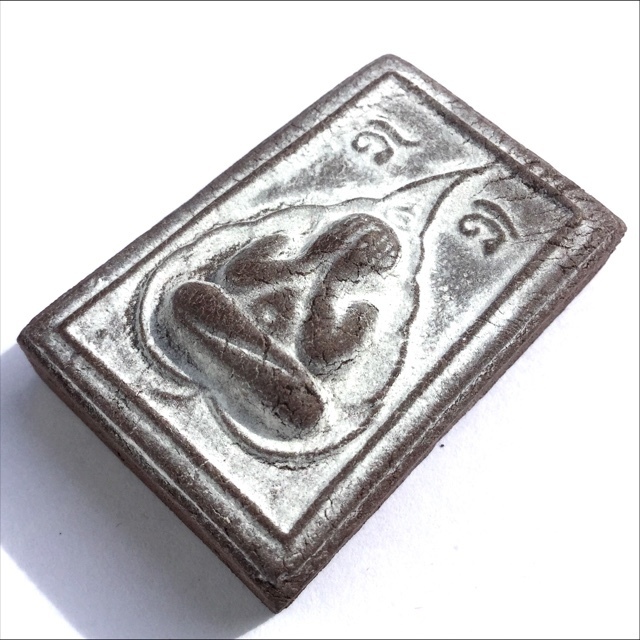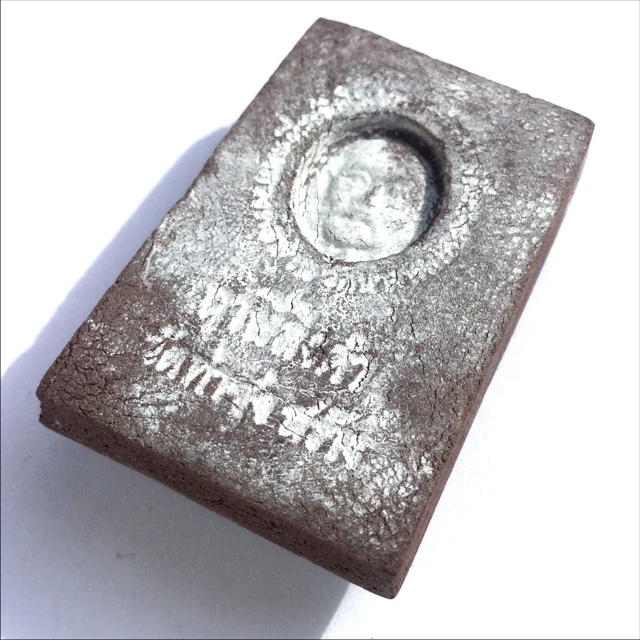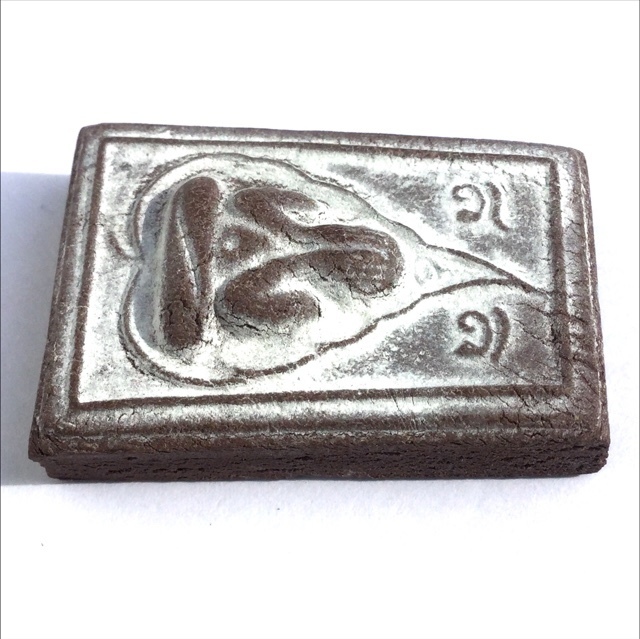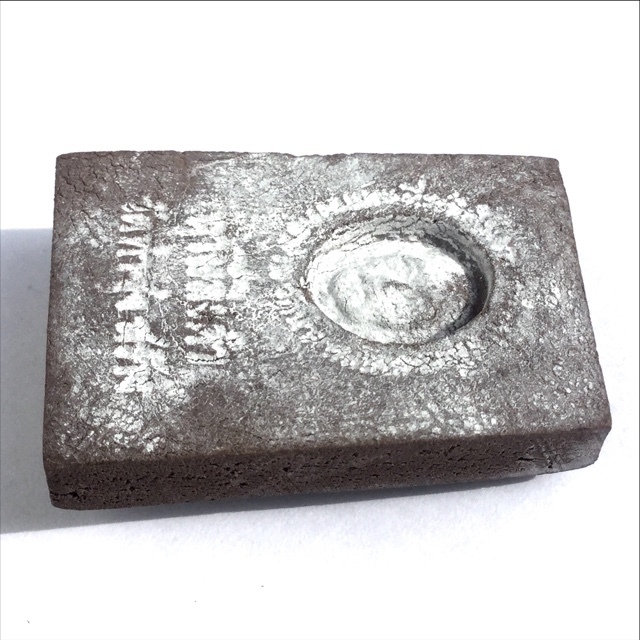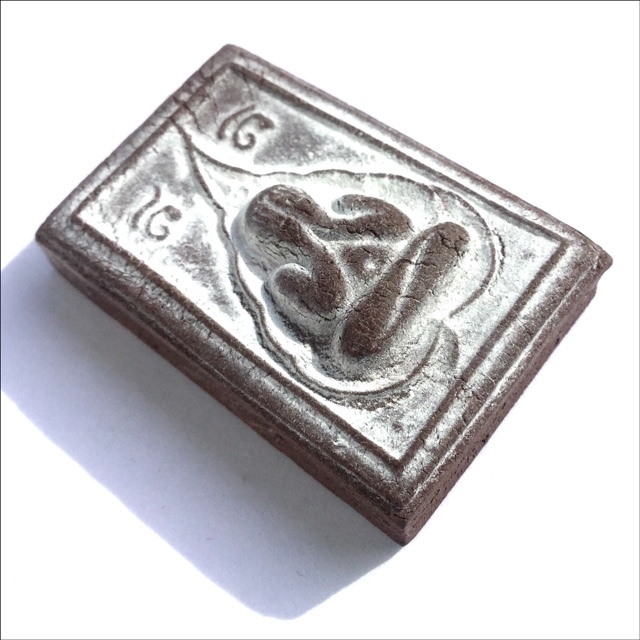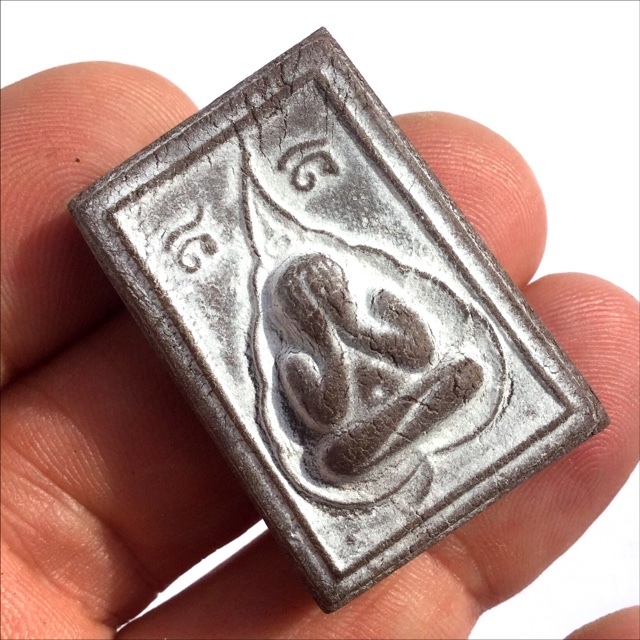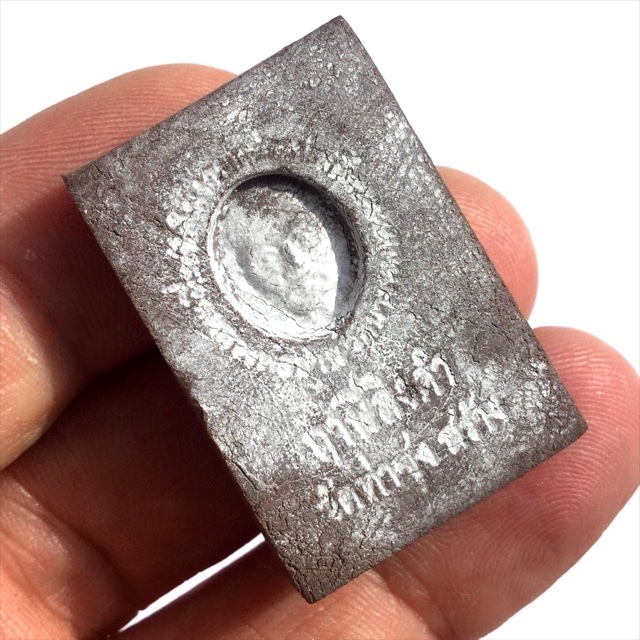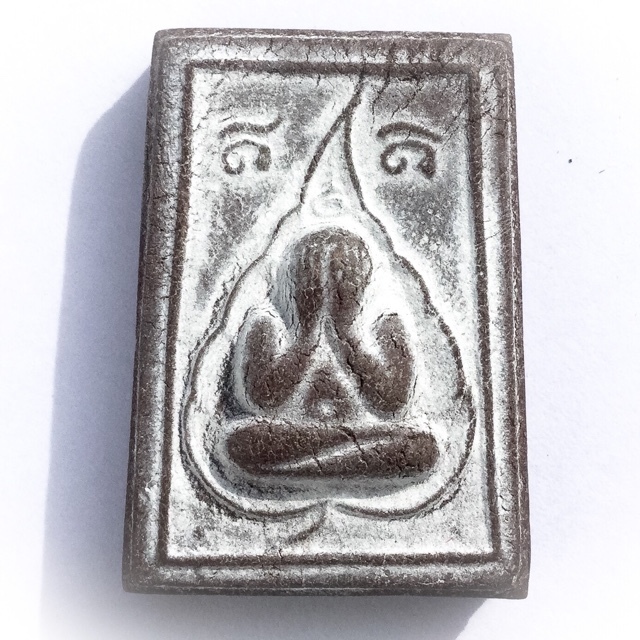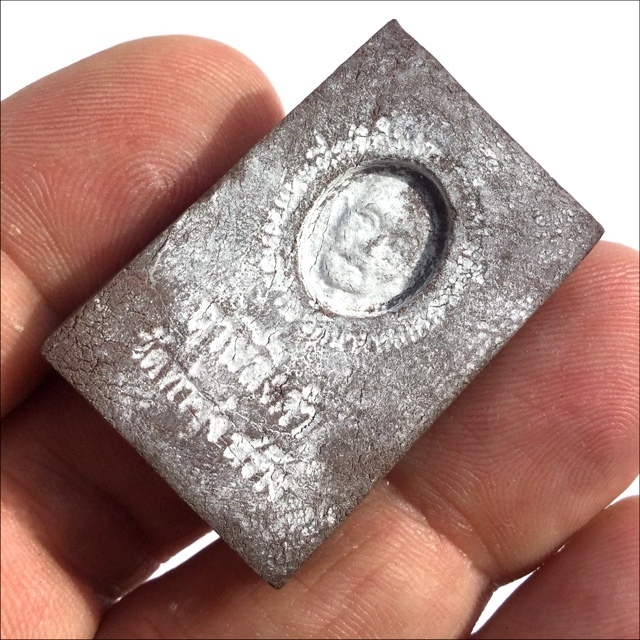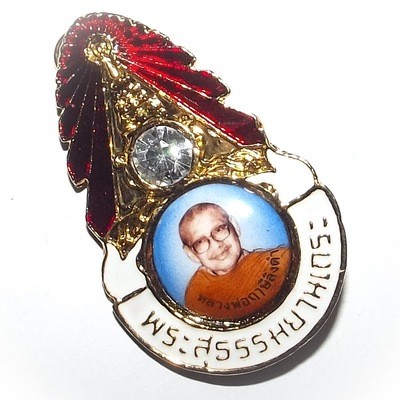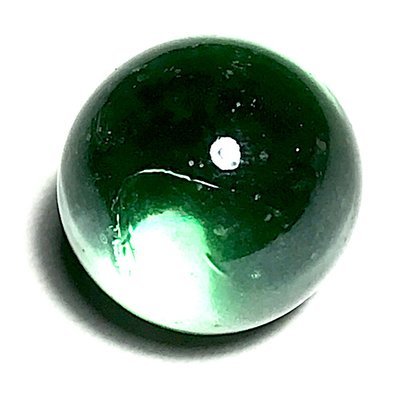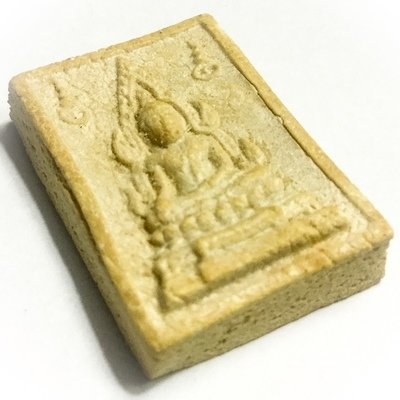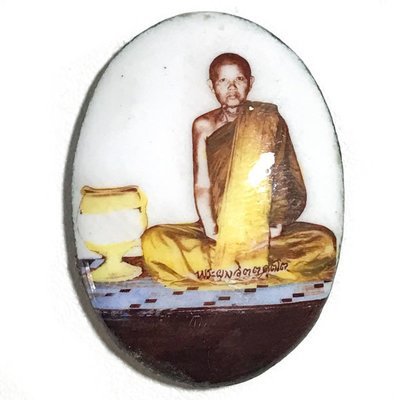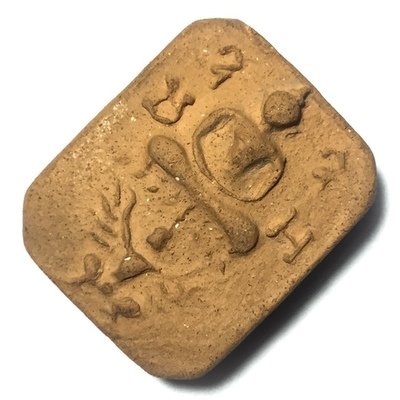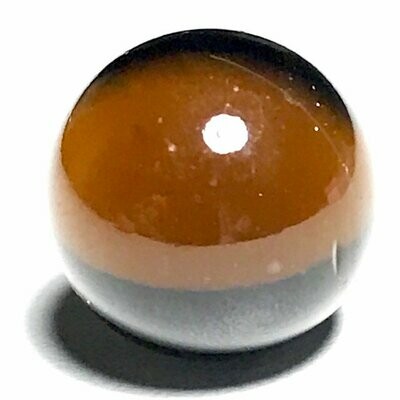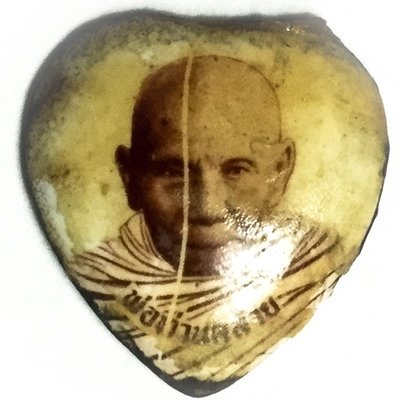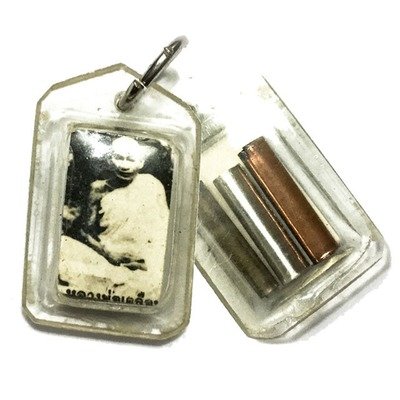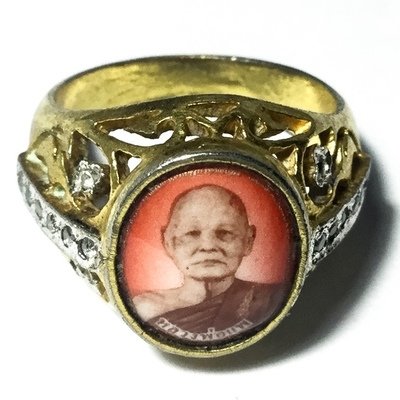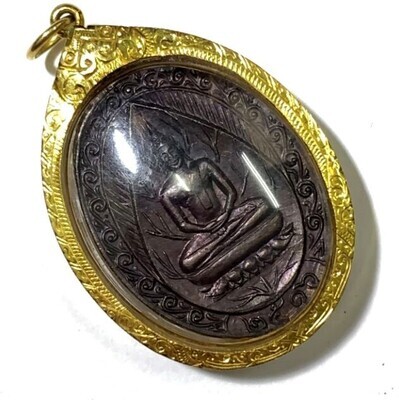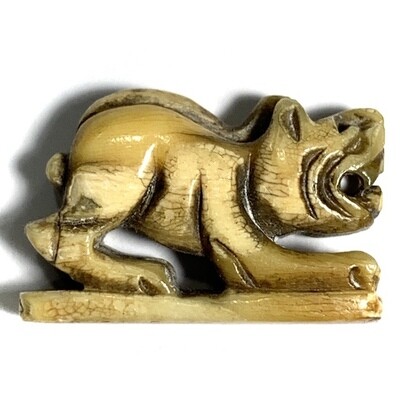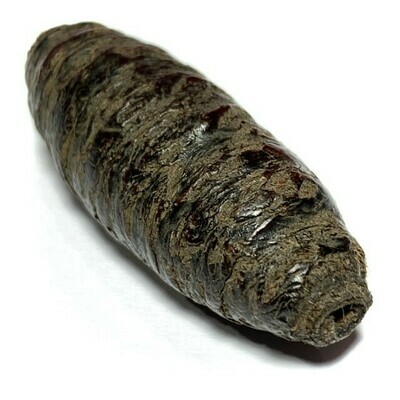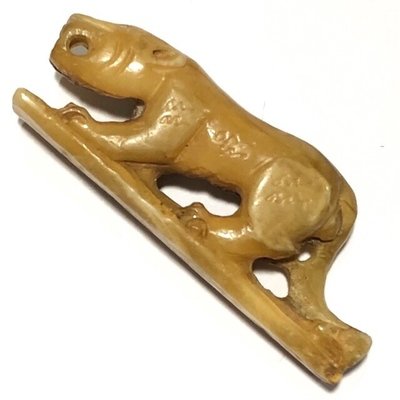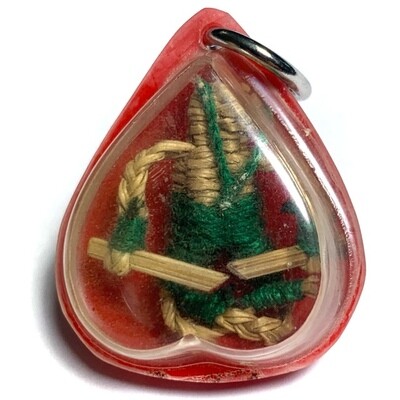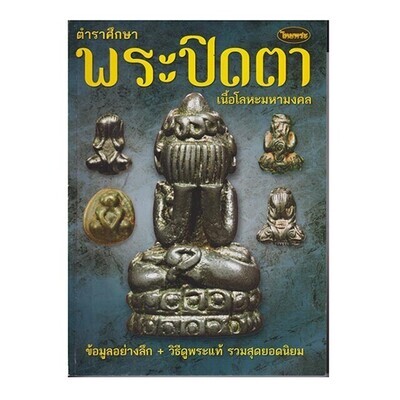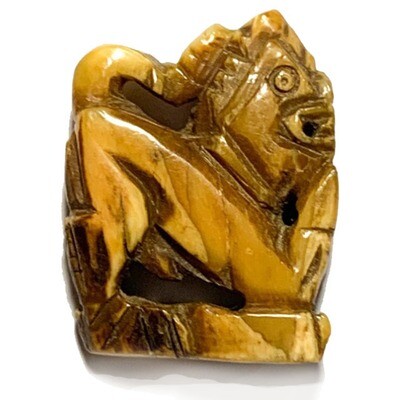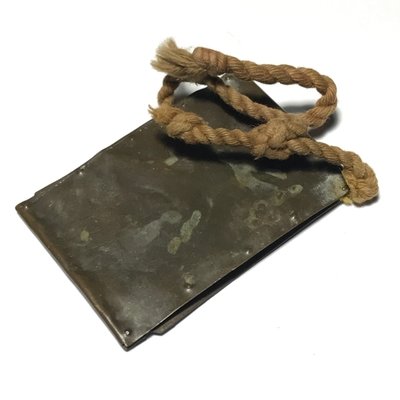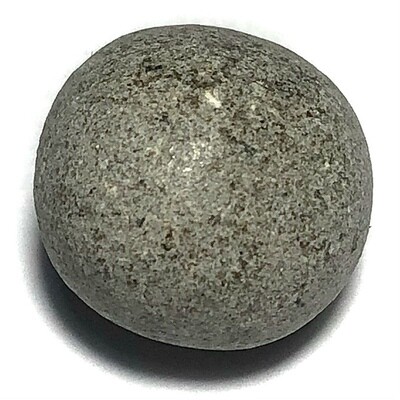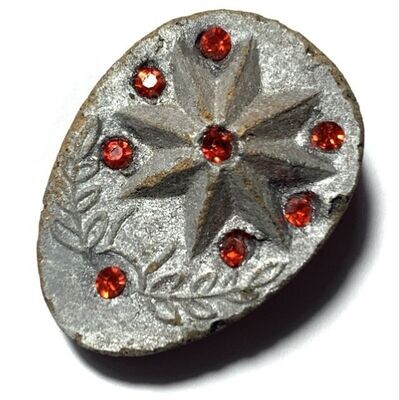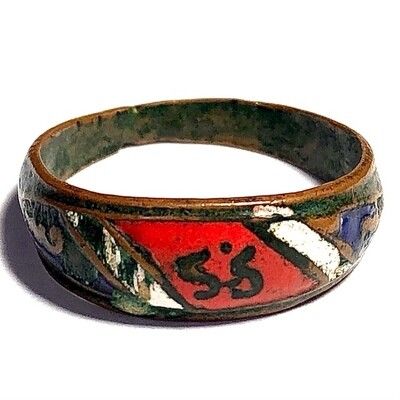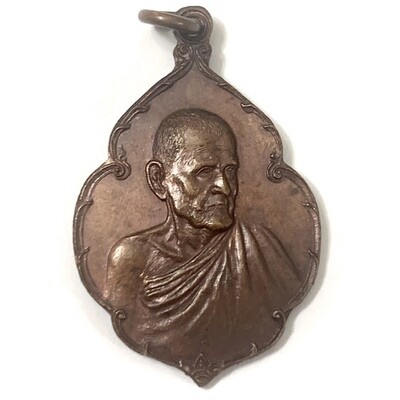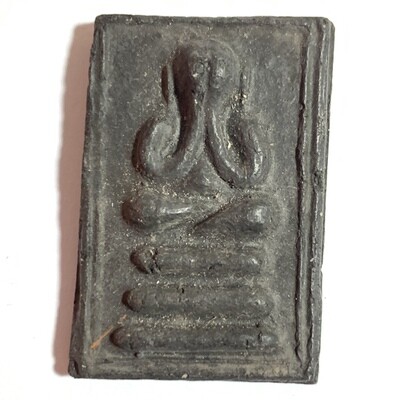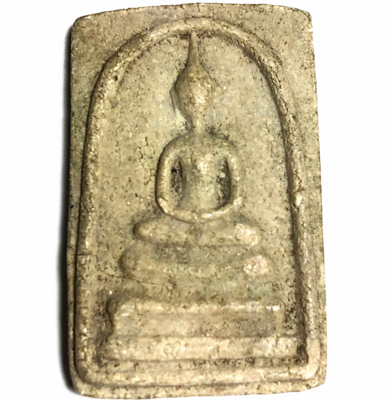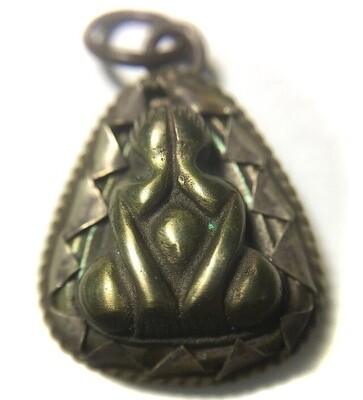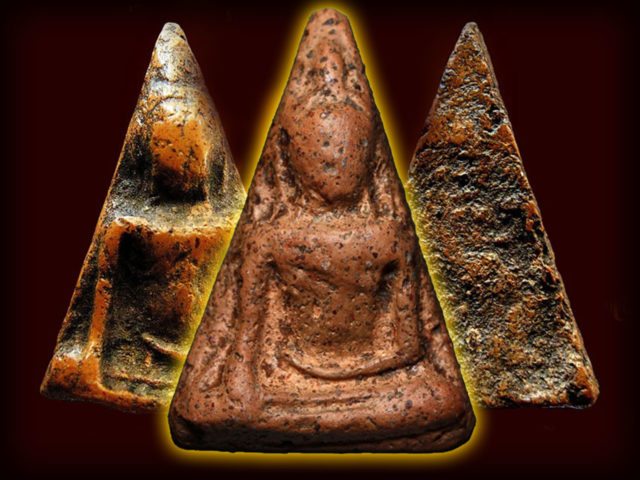
The Legend of Pra Nang Paya Amulet
Pra Nang Paya Benjapakee Amulet
Pra Nang Paya, or ‘Pra Pim Nang Paya, is an amulet from the Ayuttaya Period, which was artistically influenced in its design factors by the Artisans of the Sukhothai Periodic Style. As to the composition of the design of the Pra Nang Paya amulet, it can be said that it contains the work of the Sukhothai Artisan as its heritage, and is a Mark of Preservation of the Eight Periodic Buddhist Art styles found in Thai Sacred Arts and Amulets.
The Pra Nang Paya amulet was first discovered within the Chedi Stupa at Wat Nang Paya in Pitsanuloke, in the year 2444 BE, as King Julalongkorn Rama 5 was visiting Pitsanuloke, to be present for the casting of the Chinarat Replica Buddha at Wat Pra Sri Radtana Sasadaram. The King was invited to come and receive a large number of them as gifts (the best selected), and his Majesty then distributed them to the Government Officials and other Courtiers and Devotees. The remaining amulets, he took back to Bangkok. Apart from the ‘Serm Duang’ Horoscope Improving effects of this Purely Buddhist Amulet, the amulet is Famous for its Metta Mahaniyom, Klaew Klaad, Kong Grapan Chadtri, and Maha Lap powers.
The Pra Nang Paya Benjapakee amulet has 7 different Pim in total.
Pra Nang Paya Pim Khao Koeng.
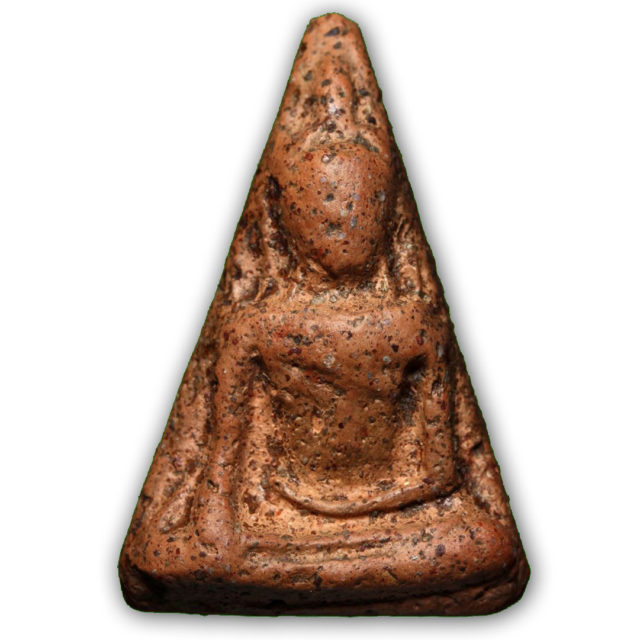
Pra Nang Paya Pitsanuloke Pim Khao Koeng Benjapakee Hiding Place Amulet
Pra Nang Paya Pim Khao Dtrong
(splits into two models; Khao Koeng Tammada, and Khao Koeng Mer Dtok Khaa).
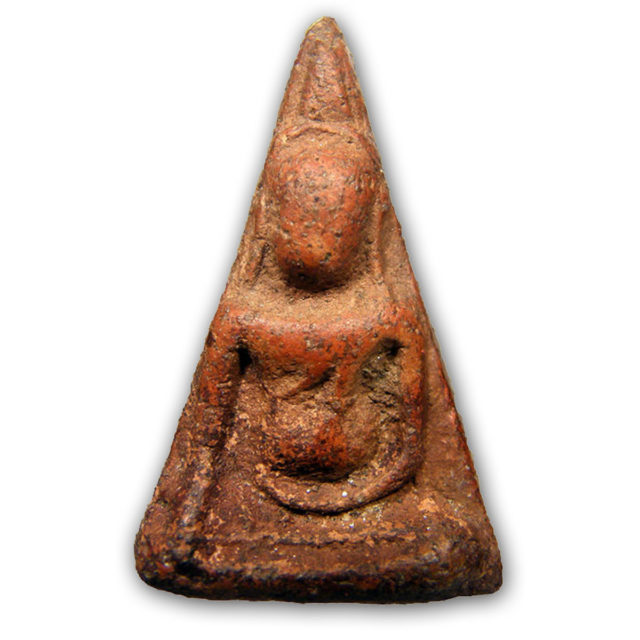
Pra Nang Paya Pitsanuloke Pim Khao Dtrong Benjapakee Amulet
Pra Nang Paya Pim Ok Noon Yai
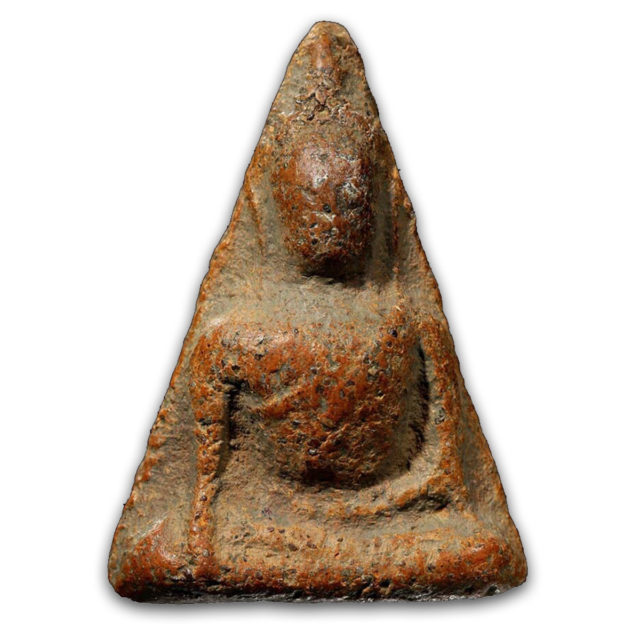
Pra Nang Paya Pim Ok Noon Yai Benjapakee Amulet – a Classic Pra Niyom Master Class Amulet
Pra Nang Paya Pim Ok Noon Lek.
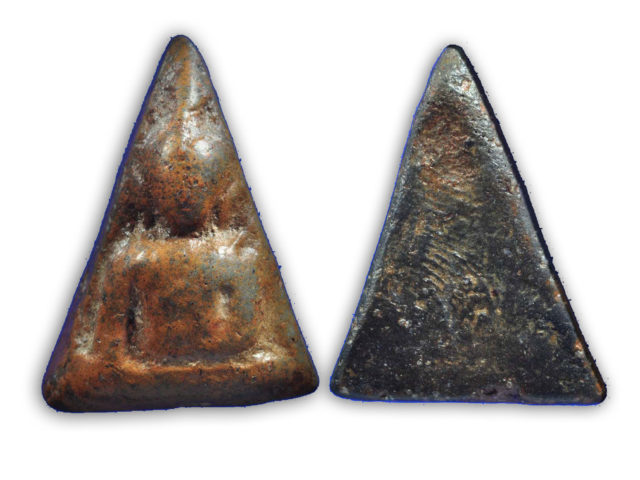
Pra Nang Paya Pitsanuloke Pim Ok Noon Lek Benjapakee Amulet of Historical Fame and Legend
Pra Nang Paya Pim Sangkati.
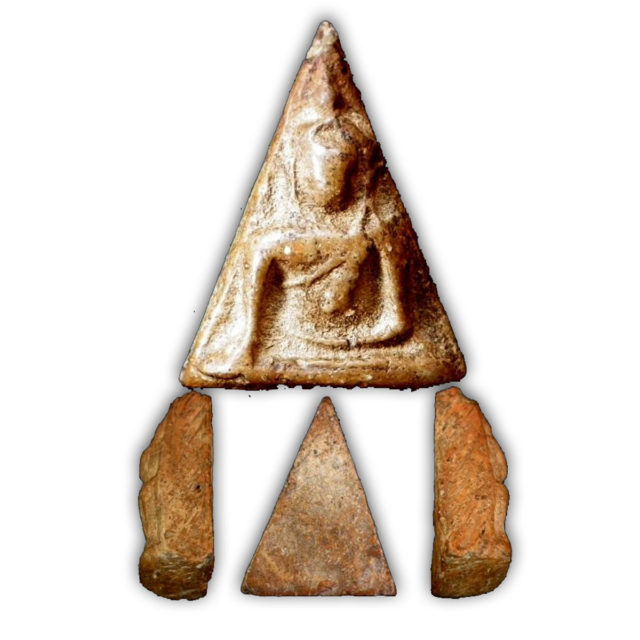
Pra Nang Paya Pitsanuloke Pim Sangkati Benjapakee Amulet – a very rare model to encounter from the seven Pim discovered in the Pitsanuloke Find
Pra Nang Paya Pim Ok Faeb also called ‘Pim Taewada’.
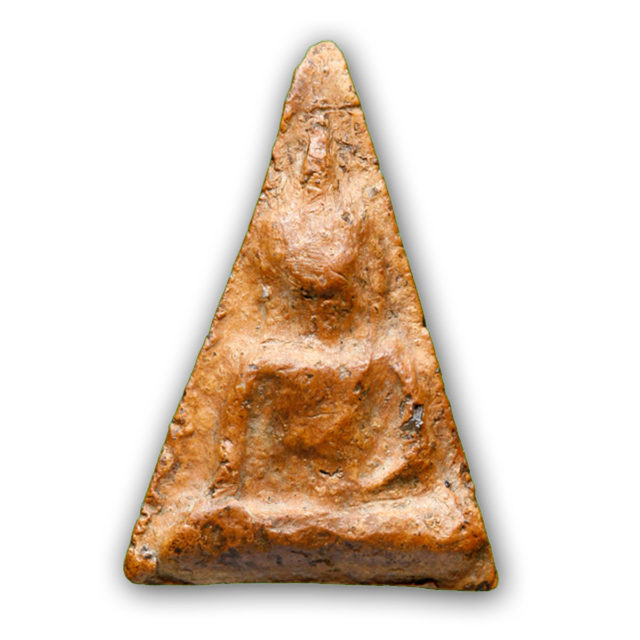
Pra Nang Paya Pim Tewada – a Classic Benjapakee Pra Niyom Master Class Amulet
Pra Nang Paya Pim Pised
(includes various amulets which do not fit in the above categories, such as the Khao Buang, or the Pim Yai Pised).
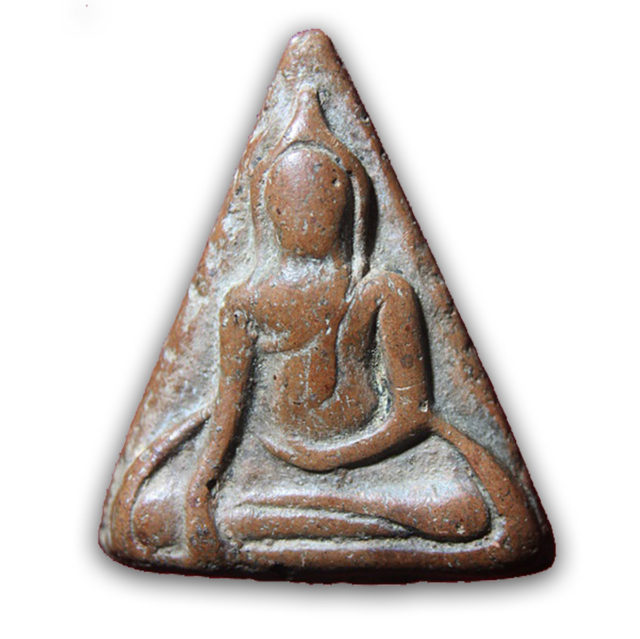
Pra Nang Paya Pim Pised Rare Special Model
Pra Pid Ta Ud Kring Luang Por Parn Centenary Edition 2518 BE - Luang Por Ruesi Ling Dam - Wat Ta Sung
Pra Pid Ta Ud Kring (Nirodha Buddha with Medicine Buddha Kring Bead Insert) - Nuea Wan Dam Pasom Pong Bailan (Black Herbal and Parchment Powders) - Tee Raleuk Luang Por Ruesi Ling Dam of Wat Ta Sung (Utai Thani). The Pra Pid Ta Maha Lap Pim Yai was released in the Year 2518 BE, to celebrate the Centenary (100 year Anniversary) of the birth of the Great Luang Por Parn of Wat Bang Nom Kho. Luang Por Parn of Wat Bang Nom Kho was the Kroo Ba Ajarn of Luang Por Ruesi Ling Dam.
The edition assisted to fund the casting of the Sacred Metal Statue of Luang Por Prohm , which was performed on the days between 6 - 10 August 2518 BEin Ritual 'Te Tong' gold pouring ceremony (all Buddha and Guru Statues have an element of Solid Gold smelted into their Sacred Metallic Chanuan Muan Sarn). The Pra Pid Ta Maha Lap Ud Kring were released in various types of Muan Sarn; White Puttakun, Black Bailan/Wan, and Red Hang Hmak Powders.
The Pra Pid Ta Maha Lap freatures an image of a Buddha Entering Nirodha covering his eyes (to retreat from the outer sense organs), and has a small Cameo 'Kreung Ongk' half torso image of Luang Por Ruesi Ling Dam on the rear face. The Pra Pid Ta Maha Lap was made in four different series, this being the third series after the 'Hmeun' ten thousand, and 'Sorng Hmeun' twenty thousand editions. a fourth series was also made called the 'Hlang Hnang Ser' edition, which had the words 'Khong Luang Por Parn' on the rear face.
The image of the Nirodha Buddha is seated within the contours of a Bhodi Leaf, with the Khom Agkhara Kata 'I Dti' embossed on the top part of the amulet. The sacred powders have a fine layer of Pong Puttakun Sacred Powder Mildew which has risen up to the surface, which is said to be a product of the Sacred Blessing and Incantations within the amulet.
The cameo image of the rear face has the words 'Tee Raleuk Hlor Roop Hmuean Luang Por Parn Wat Bang Nom Kho embossed, denoting the occasion of the casting ceremony.
The amulets are known for their highly charged Puttakun Power, with all powers of Metta, Klaew Klaad, Kong Grapan, Maha Sanaeh, but are mostly famous because of their strong Healing Power, and that of the Power of Lap Sakkara (Honorable Status, Promotion and Wealth). The Pong Puttakun (Sacred Powder) is visibly risen to the Surface of the Amulet, and recognizably Authentic.
These amulets are also famously powerful for making Holy Prayer Water (Nam Montr) through immersion (even encased, which is advisable for immersion if you wish to preserve the beauty and pristine condition of the amulet). For this amulet, Luang Por Ruesi Ling Dam laid out some information; Firstly, before we undertake any of our duties or tasks each day, we must think of the Buddha and his Acheivement, and to have deep respect in one's heart for the Buddha.
If one does this in the moment before Praying to the amulet, and focus to pray mantaining this Respect and Wonder at the Buddha's Self Enlightenment as you pray, then the amulet will emit Massive Lap Sakkara Power, to increase your Social and Professional Standing, and the Aura of Grandeur. Then one should place the amulet between the palms of the hand, and raise between the eyebrows to the forehead, and Chant the Maha Namasakara 3 Times, after which, one shold say "Today, i ask for ..... (whatever it is you wish for).. Blessings".
If we are able to focus on and believe strongly in the Buddha's Enlightenment and Call Upon His Merits to assist, then this is considered to be Buddhanisssati Kammathana - a Kind of Meditative state likened to, or equal to that known as 'Jhana' (absorption). This is the state of mind that is necessary to activate and call up Miracle Powers, and is tantamount to Pure Faith, which is also a kind of Focused One Pointed Concentration, Absorption, or 'Jhana'. One should also of course think of Luang Por Ruesi Ling Dam when Praying.

It is this element of the Practice of Faith reverence in Guru Worship that gives Classic Amulets from great masters the edge over many standard issue amulets, for it is the Faith that the Master instills in the heart of the devotee (the wearer of the amulet), that increases the Power of Absorption, for it is much easier to feel Faith and Confidence from an Amulet that was made by a Guru Master that we all know of and is Legendary, and whom we believe in his teachings.
If we do this every day before undertaking our chores and duties, we will have Great Success and Achievements coming our way. A truly sacred and Historical Amulet, once a pupular alternative for those with lower Budgets who seek the amulets of Luang Por Parn, but now also a rarity and the treasured prized Possession of the Devotee of Luang Por Ruesi Ling Dam.
When you think of the Buddha with Rapture in your Heart, as a Buddhist, then you should always remember the amulet hanging around your neck, and remember that it represents the Buddha himself.
The Buddhas of the Ages will descend and Guard over You who pray correctly to this amulet. Use the Kata Ngern Larn (Millionare Kata for Riches), as given by Luang Por Parn, and Luang Por Ruesi Ling Dam, to empower the amulet with Maha Lap Magic and call great wealthy Fortunes to you.
Chant Maha Namasakara 3 Times First.
Then Chant;
Sambpadtijchaami Naa Sang Si Mo
Prahmmaa Ja Mahaa Taewaa Sappae Yagkhaa Bparaayandti
(Kata to remove Obstacles)
Prahmmaa Ja Mahaa Taewaa Apilaapaa Pawandtumae
(Kata for Wealthy Fortunes of Money)
Mahaa Bpanyo Mahaa Laapo Pawandtumae
(Kata for Luck without Interruptions)
Midtae Paahu Hadti
(Kata for Monetary Millions)
Putta Ma - A - U Namo Puttaa Ya Wiratayo Wirakonaayang Wirahingsaa Wirataasii Wirataasaa Wira Idthiiyo Puttassa Maanii Maama Swaahoem
(Kata Pra Bpajjaega Putta Jao)
Sambpadtijchaami (Kata to speed up Lucky Fortunes to come each day)
Peng Peng Paa Paa Haa Haa Leu Leur
Chant the whole Kata Nine Times
